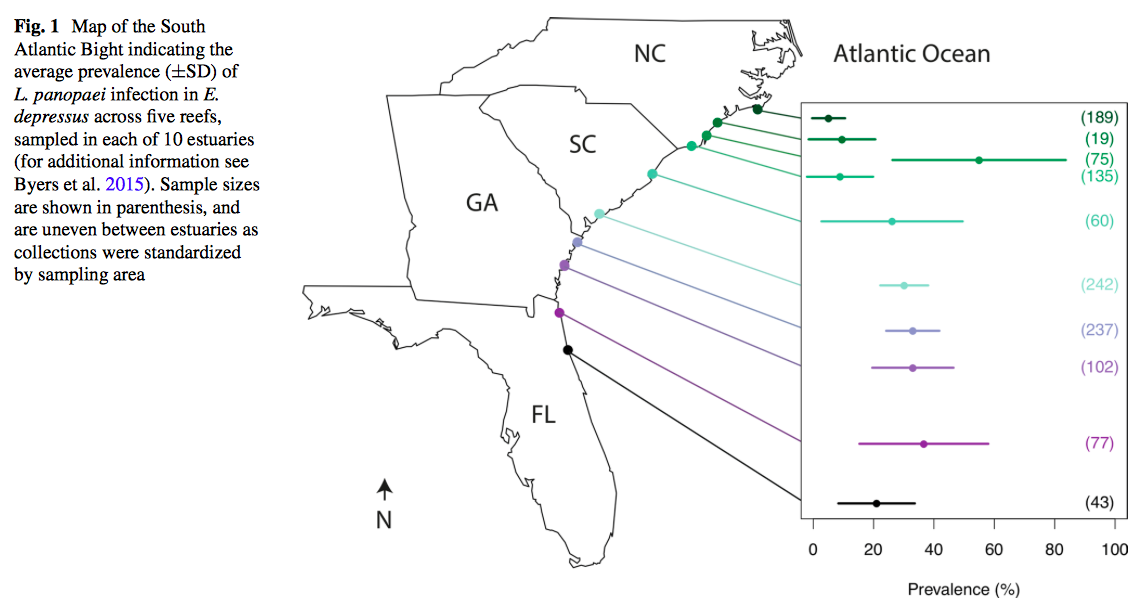
Not all hosts, communities or environments are equally hospitable for parasites. Direct and indirect interactions between parasites and their predators, competitors and the environment can influence variability in host exposure, susceptibility and subsequent infection, and these influences may vary across spatial scales. To determine the relative influences of abiotic, biotic and host characteristics on probability of infection across both local and estuary scales, the Byers lab surveyed the oyster reef-dwelling mud crab Eurypanopeus depressus and its parasite Loxothylacus panopaei, an invasive castrating rhizocephalan, in a hierarchical design across >900 km of the southeastern USA. They quantified the density of hosts, predators of the parasite and host, the host’s oyster reef habitat, and environmental variables that might affect the parasite either directly or indirectly on oyster reefs within 10 estuaries throughout this biogeographic range. Their analyses revealed that both between and within estuary-scale variation and host char- acteristics influenced L. panopaei prevalence. Several additional biotic and abiotic factors were positive predictors of infection, including predator abundance and the depth of water inundation over reefs at high tide. They demonstrated that in addition to host characteristics, biotic and abiotic community-level variables both serve as large-scale indica- tors of parasite dynamics.
- Gehman, A. M., J. H. Grabowski, A. R. Hughes, D. L. Kimbro, M. F. Piehler, & J. E. Byers.. 2017. Predators, environment and host characteristics influence the probability of infection by an invasive castrating parasite. Oecologia 183: 139–149. PDF